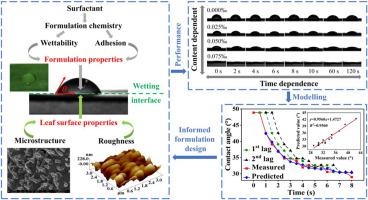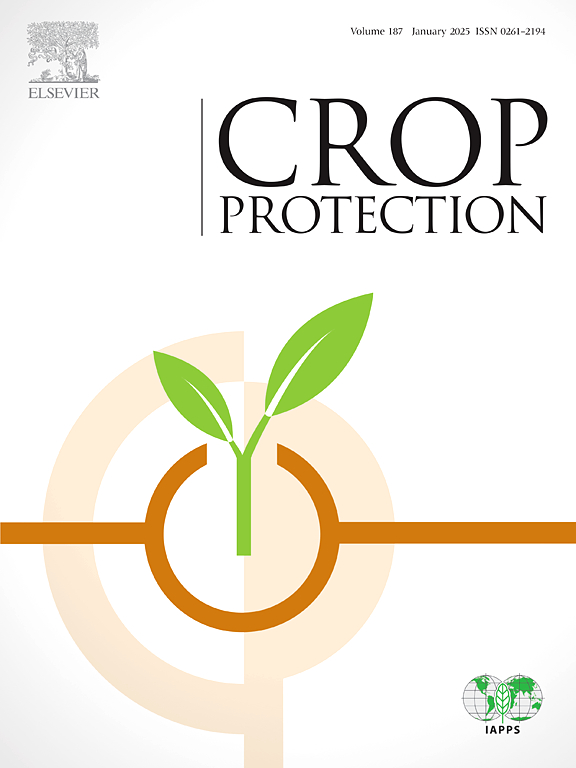Regulation mechanism of droplets wetting on banana leaf surface and its dynamic contact angle wetting model
Abstract
The effective wetting and deposition of pesticide droplets on the leaf surface significantly affect the control of pests and diseases, and its mainly affected by the leaf surface properties and pesticide formulation properties. This article aims to investigate the wettability regulation mechanism and dynamic wetting properties of banana leaves, in order to intelligently design appropriate pesticide formulations. The micro-morphology of the banana leaves exhibits a micro-nano dual-scale structure with different microstructures and roughness on the adaxial side and abaxial side. Correspondingly, the wettability on the adaxial side of the banana leaf with higher roughness (Rq = 71.1 nm) is always better than that on the abaxial side (Rq = 42.5 nm). The droplet contact performance of droplets exhibits a strong concentration dependence of surfactants, which regulate the inter-species differences in the wettability of different pesticide formulations on both sides. Besides, the dynamic wetting process of pesticide droplets exhibits strong time dependence, by using a time series method to establish an AR(2) model, precise simulation and prediction of the contact angle changes on the adaxial side (R2 = 0.9560) and abaxial side (R2 = 0.8903) during the dynamic wetting process were achieved. The dynamic wetting model provides new insights into the spreading and deposition processes of droplets on leaves. This work provides a favorable reference for the study of the dynamic balance between wetting and adhesion properties of pesticide spray on leaf surfaces.


 求助内容:
求助内容: 应助结果提醒方式:
应助结果提醒方式:


